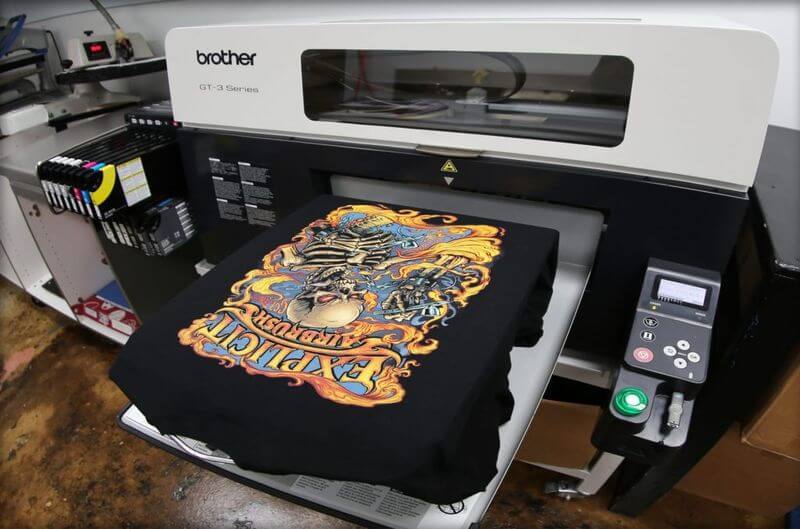What Does Digital Printing Do?
Some Known Details About Digital Printing
Table of ContentsThe Only Guide to Digital PrintingNot known Incorrect Statements About Digital Printing The smart Trick of Digital Printing That Nobody is Talking AboutDigital Printing for BeginnersDigital Printing Things To Know Before You BuyThings about Digital PrintingThe 9-Second Trick For Digital PrintingSome Known Questions About Digital Printing.
Modification additionally permits businesses to stand apart in a congested market by producing distinct advertising materials that differentiate them from their rivals. Among the major benefits of electronic printing is the capability to print variable information. Each published item can be one-of-a-kind, permitting organizations to develop personalized marketing products that talk directly to their target audience.Digital printing additionally allows for modification in the style of advertising and marketing products (Digital Printing). With digital printing, organizations can create layouts that are distinct and customized to their specific requirements.
An Unbiased View of Digital Printing
By printing smaller amounts of advertising and marketing products, businesses can reduce waste and prevent the requirement for excess stock. Digital printing is likewise flexible.
By using various products and styles, services can produce special advertising and marketing products that stick out from their rivals and stand out from their target market. Digital printing additionally supplies consistency. With traditional printing methods, there is commonly variant in between prints as a result of distinctions in ink coverage, stress, and various other factors.
This uniformity can aid build customer count on and reliability, showing that business is dedicated to providing high-quality materials. Consistency is particularly important for services that desire to construct client depend on and trustworthiness. By guaranteeing that every print is consistent, organizations can reveal that they are dedicated to providing high-grade products and focusing on the information.
All about Digital Printing

On top of that, electronic printing produces less waste since it can publish as needed and in smaller quantities, reducing the need for excess inventory and materials. Digital printing also uses less energy compared to conventional printing techniques. Digital printers do not need as much energy to operate, as they do not need to heat up as much or utilize as much power to run.
Digital Printing Fundamentals Explained

Offset printing calls for a plate for each color published. Traditional balanced out printing is a print approach that uses light weight aluminum plates to transfer ink onto a rubber sheet (often referred to as a "covering"). The image is then rolled onto the printing surface area. This printing method is thought about "countered" because the ink is not moved to the paper straight.
The 3-Minute Rule for Digital Printing
Balanced out printing allows for a vast variety of print materials to be made use of during production. The high-quality pictures produced via balanced out printing make it the preferred approach, particularly amongst visuals designers, when looking for the greatest shade reproduction, information, and professional-looking prints.
For electronic inkjet printing, ink is transferred directly onto the surface. Rather than counting on aluminum plates and rubber coverings to move an image, electronic printing makes use of liquid ink throughout production.
The Of Digital Printing
Much better color integrity describes both the precision of the shades and their balance in the style. Since countered printing can blend customized color inks for check these guys out every task, it will normally obtain the shades spot-on. Functions just as well on virtually any kind of material. Trusted, superior picture high quality. Depend on countered printing for clean, unique kinds and pictures without streaks or areas.
It sets you back a whole lot to begin a countered task. You have to invest money into producing the plates, which takes time. However, as soon as you have actually invested it, all of the products prepare to go, and you'll invest less on big countered work than a digital print, which is about the same per item regardless of how large the work gets.
Each print equals. You take the chance of fewer weird variations created by discrepancies in water and ink. Digital printing is less expensive for low-volume work. The price per device drops for electronic printing, so at some time, they crisscross. Transforming info within a single print task. As an example, state you were publishing out postcards promoting a performance.
Getting The Digital Printing To Work
While electronic printing or inkjet printing is the recommended selection in the existing times, there are engaging factors to convert from offset to digital printing systems. When publishing countered or electronically, critical choices and procedures are entailed in color matching.
Whichever the case, the shade will certainly require to be matched. Color matching of digital printer ink is no much longer challenging with dyes and pigments. Industrial inkjet printing offers flexibility for printing on numerous different substrates. Digital printing is ideal for customers that do not need longer runs and warehousing materials.

One advantage of digital printing is picking from a large array of digital substrates. With offset printing, substratums make up, generally, 30% of the cost of additional reading the job. With electronic printing, the cost of the substrate in the general task is tiny. This enables more choices than ever previously, which benefits marketing professionals and businesses.
An Unbiased View of Digital Printing
Tools expenses in inkjet printing are far reduced than balanced out printing as there are no plate-making, plates, and press expenditures. Past the capital expenditure, the prepress devices and printing presses call for extremely experienced drivers in offset printing, which over here includes labor costs.